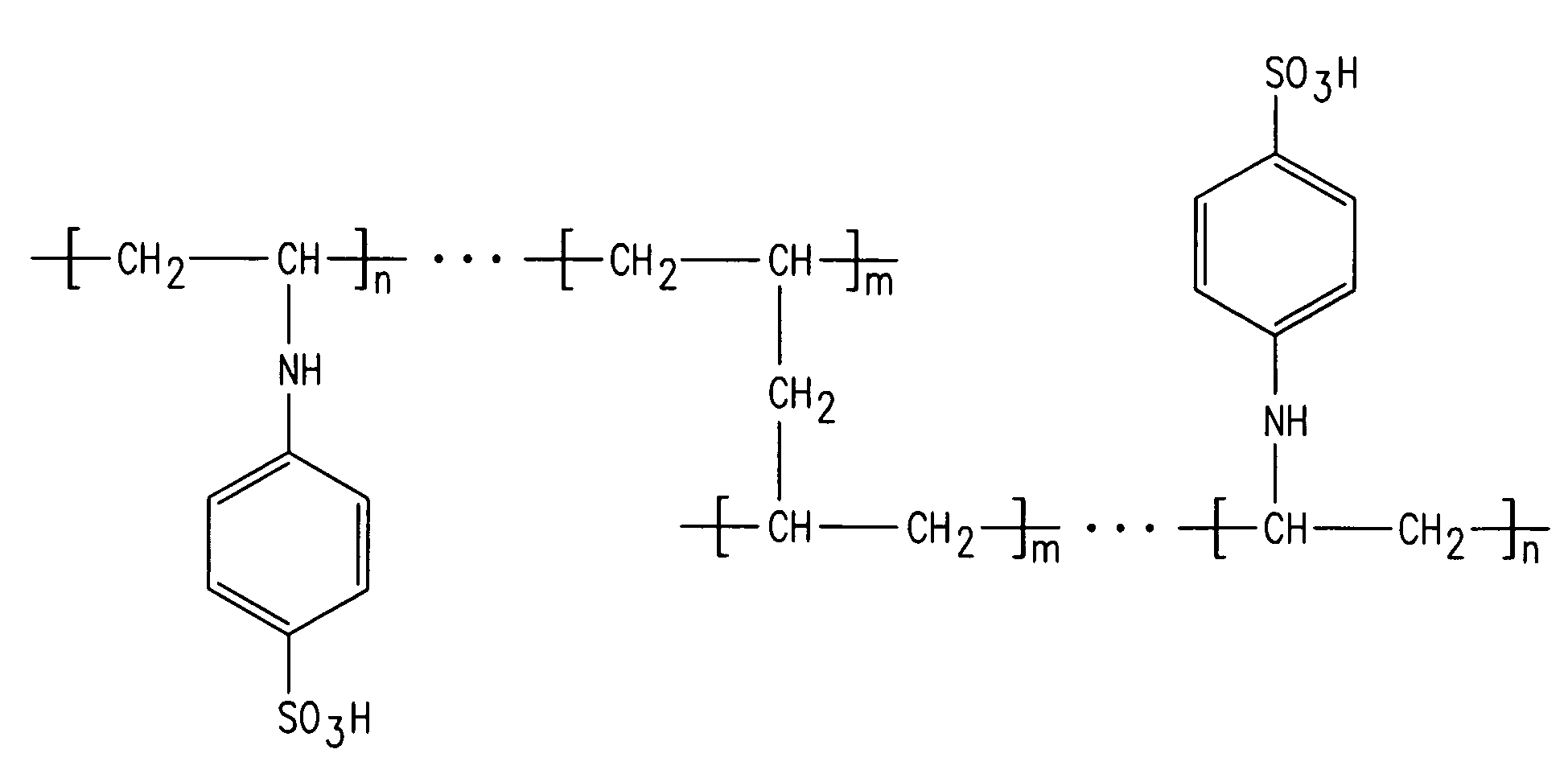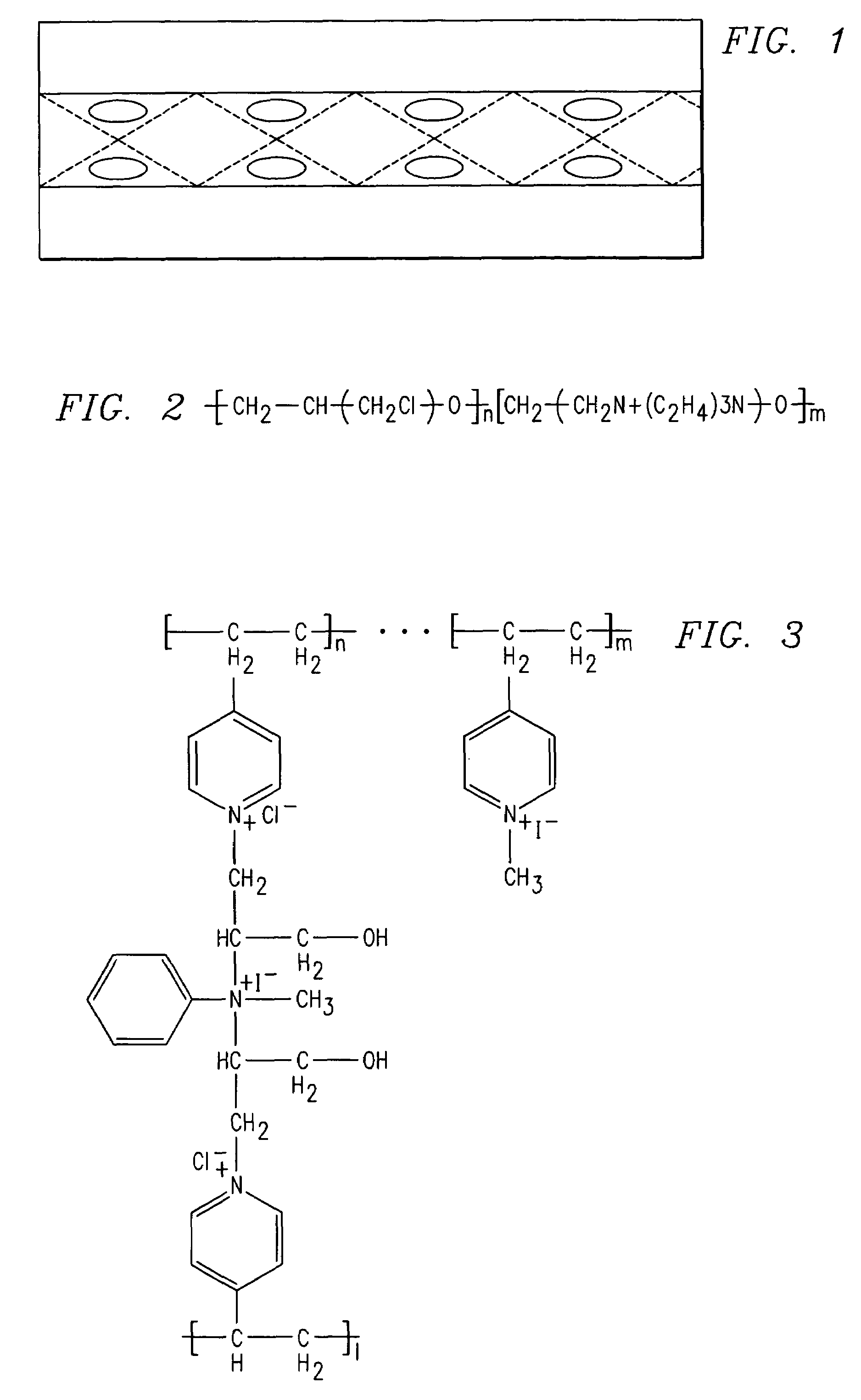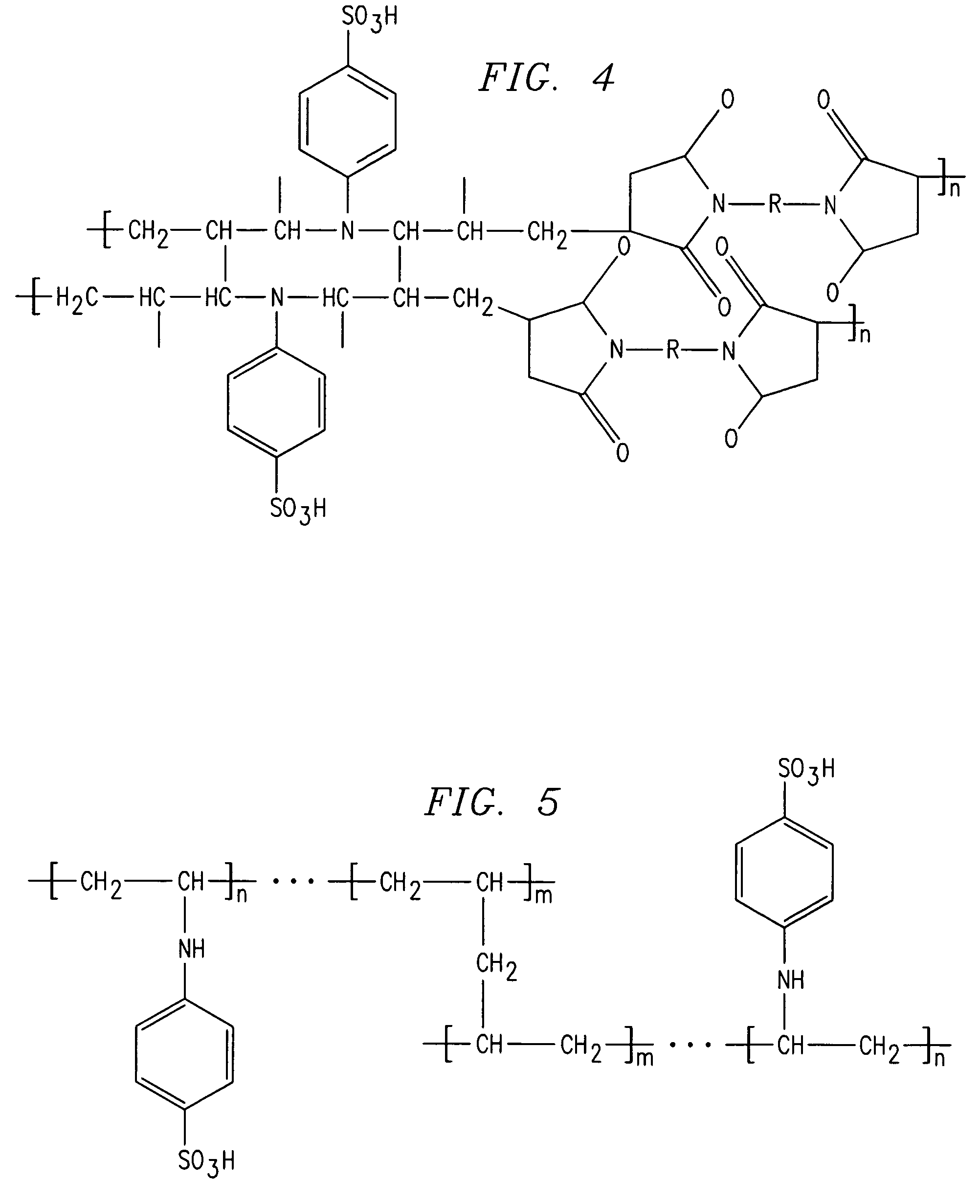Ion exchange membranes, methods and processes for production thereof and uses in specific applications
a technology of ion exchange membranes and cation exhanges, which is applied in the direction of fluid pressure measurement, liquid/fluent solid measurement, peptides, etc., can solve the problems of harmful to human health, concentrations of fluoride ions significantly above the 0.5-1.5 ppm recommended level for drinking water, and the concentration of nitrate ions in ground water is excessive, so as to achieve less toxic
- Summary
- Abstract
- Description
- Claims
- Application Information
AI Technical Summary
Benefits of technology
Problems solved by technology
Method used
Image
Examples
example 1
Preparation of Anion Exchange Membrane Using 4-Vinylpyridine Crosslinked with Epichlorohydrin and Aniline
[0090]One gram of 4-vinylpyridine was dissolved in 10 ml of ethyl alcohol and the mixture was polymerized in the presence of a benzyl peroxide initiator (2 weight % relative to the vinyl monomer) for 6 hours at 80° C. in a 100 ml round bottom flask. The polymer formed in solution was precipitated by the addition of 50 ml of water. The white colored solid polymer was separated by filtration and washed repeatedly with distilled water to remove the low molecular weight polymers. About 4 g of polymer was dissolved in 1000 ml of ethyl alcohol and to this solution, epichlorohydrin and aniline were added as crosslinking agents. The resulting mixture was poured onto woven PVC membrane and the process of crosslinking was continued up to 12 hours at room temperature.
[0091]Subsequently, the PVC fabric with polymer was sandwiched between plastic lined glass plates and heated to 80° C. for pe...
example 2
Preparation of Anion Exchange Membrane Using N-Isopropylacrylamide and 4-Vinylpyridine
[0098]The anion exchange membrane was prepared by copolymerizing 4-vinylpyridine and N-isopropylacrylamide using benzyl peroxide as an initiator. The 4-vinylpyridine and N-isopropylacrylamide (1 weight % to the vinyl monomer), aniline and epichlorohydrin and the initiator were mixed in a 100 ml beaker. The resulting mixture was pasted onto woven PVC material and polymerized at 80° C. for 12 hours in an inert atmosphere. The polymer formed was washed with diethylether to remove unreacted monomers. It was further quaternized with methyl iodide in hexane as a solvent for 12 hours at room temperature. See FIG. 7. The polymer structure was confirmed as characterized by FTIR.
example 3
Preparation of N,N′-Diallylaniline-Based Cation Exchange Membranes
[0099]One of the cation exchange membranes of the present invention was prepared by copolymerization of N,N′-diallylaniline with maleimide derivative in an inert atmosphere at 80° C. for 12 hours. The polymer obtained was precipitated in a nonsolvent (methanol, acetone or ethanol). Next, it was dissolved in a minimum amount of organic solvent (chloroform or benzene) so as to obtain a pasty mass, which was then pasted on a woven PVC membrane. The polymer formed was further crosslinked by thermal curing at 120° C. for 12 hours in an inert atmosphere in order to increase the mechanical strength and chemical stability. The membrane thus obtained was subjected to sulfonation using chlorosulfonic acid in dichloromethane. The reaction scheme is shown in FIG. 8.
PUM
| Property | Measurement | Unit |
|---|---|---|
| molar ratio | aaaaa | aaaaa |
| current density | aaaaa | aaaaa |
| thickness | aaaaa | aaaaa |
Abstract
Description
Claims
Application Information
 Login to View More
Login to View More - R&D
- Intellectual Property
- Life Sciences
- Materials
- Tech Scout
- Unparalleled Data Quality
- Higher Quality Content
- 60% Fewer Hallucinations
Browse by: Latest US Patents, China's latest patents, Technical Efficacy Thesaurus, Application Domain, Technology Topic, Popular Technical Reports.
© 2025 PatSnap. All rights reserved.Legal|Privacy policy|Modern Slavery Act Transparency Statement|Sitemap|About US| Contact US: help@patsnap.com



